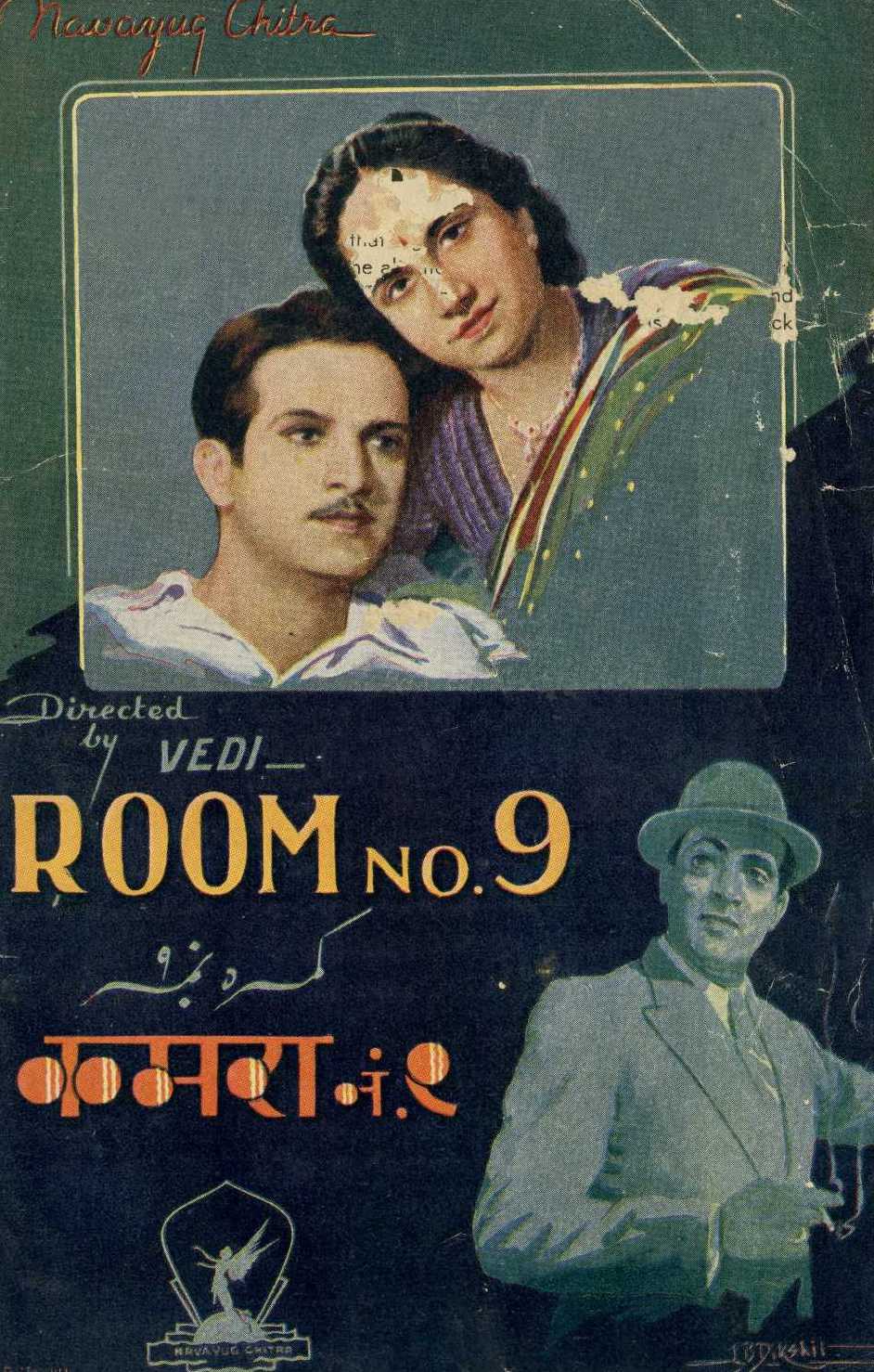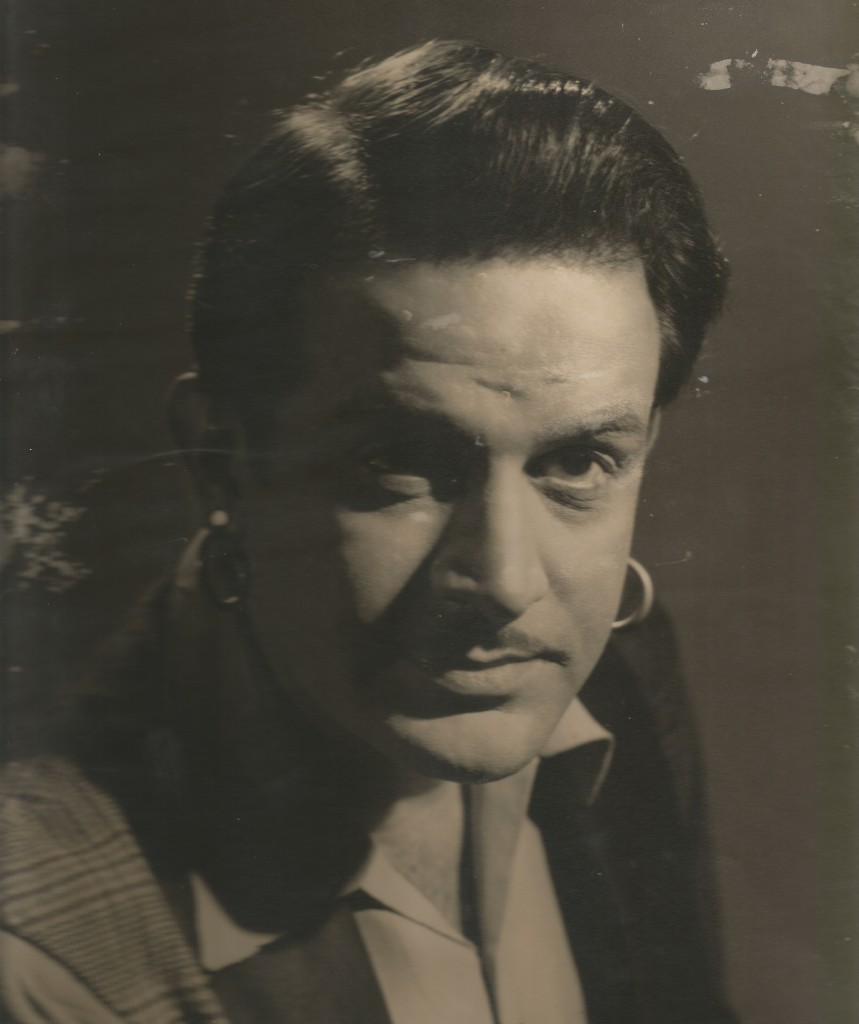Shyam is regarded as one of the most good-looking leading men Hindi cinema has ever seen by old timers. Hindi cinema historians are certain that if not for his untimely death in 1951, the face of Hindi cinema in the 1950s would have been very different. For, at the time, Shyam was as big a star as the trimurti that would rule Hindi cinema in the ’50s – Dilip Kumar, Dev Anand and Raj Kapoor.
He was born Sunder Shyam Chadha on February 20, 1920 in Sialkot in undivided India. Shyam spent his growing up years in Rawalpindi and graduated from Gordon College there. Keen on acting, he appeared in a screen test for Bombay Talkies in the early 1940s but was rejected and assisted director JK Nanda briefly. He began shooting for a film in Calcutta opposite Jahanara Kajjan, no less, but differences with the director made Shyam walk out of the project. He then made his acting debut in the Punjabi movie, Gowandhi (1942), co-starring Veena, Manorama, SD Narang, Asha Posley and the great character actor, M Ismail. However, Shyam’s father was not keen for him to work in the film line but his uncle, Tarachand Chadha, convinced the family to let Shyam follow his dream.

Shyam appeared in WZ Ahmed’s Man Ki Jeet (1944), opposite Ahmed’s ‘discovery’ Neena and in Room No. 9 (1946) opposite Geeta Nizami but was doing just the odd film without that crucial big breakthrough. Following the Partition of India in 1947 and screen testing again for Bombay Talkies, Shyam was successful this time. He starred in their production, Majboor (1948), directed by Nazir Ajmeri and co-starring Munawar Sultana. He received fine notices for his work in the film even from the hard-to-please Baburao Patel in Filmindia magazine whose heading for the review declared,“Shyam scores in Majboor.” In the main body of the review, Filminida noted that “while the writer-director must share the credit for the characterisation of Chandu, the mischievous village youth, it is Shyam who wins not only our admiration for his acting but also our sympathy for the role that he plays. He has to cover a very wide range of moods and expressions – all the way from frivolity to intense pathos – but he comes out with flying colours. Shyam so far has been classed among the ‘promising’ artistes of the Indian screen, but one never expected him to be capable of so much versatility. With “Majboor” he makes a bod for the front-rank of Indian stardom. Soon he may replace Motilal and Ashok Kumar as the latest matinee idol.”
Shyam did not have to look back thereafter. He had well and truly arrived. What’s more, his association with Bombay Talkies also led to a close friendship with writer Saadat Hasan Manto, described in rather touching detail by the latter in a piece titled Murli Ki Dhun. Incidentally, Shyam was the one who went to see Manto off at the Bombay port when the latter moved to Pakistan following the Partition. That year on the professional front, he also appeared in Shahid Lateef’s Shikayat opposite Nigar Sultana.
Shyam broke through big time in 1949 with a string of hits including Dillagi (1949), Kaneez (1949) and Patanga (1949). Dillagi, co-starring Suraiya, remains his best known film. Directed by AR Kardar, the film reaffirmed that Shyam had it in him to be a fine actor. The film, a tragic romance, was a huge success at the box office with the popular duet Tu Mera Chand Main Teri Chandni hummed all over the country. Another extremely popular film, Kaneez, saw Shyam caught between his wife, Munawar Sultana, and sexy vamp, Kudip Kaur, who all but destroys his marriage, forcing Sultana to live like a servant in her own house. Bazar (1949) saw him teaming up with Nigar Sultana again. The film is remembered among other things for its fine musical score by Shyam Sunder with songs like Sajan Ki Galiyan Chhod Chale, one of Lata Mangeshkar’s best ever, and Shahidon Tumko Mera Salam.
Though he acted most frequently with Munawar and Nigar Sultana, it was Shyam’s pairing with Suraiya that worked particularly well. The two co-starred in three films – Dillagi, Naach (1949) and Char Din (1949). Recalling working with Shyam, Suraiya, in an interview, mentioned: “I often thought of him as the Errol Flynn of India… gay and jocular and talkative. Shyam and I had a secret language in which hard consonants like “d” and “t” were pronounced with a soft sound… …In this language, he used to call me a mare and I used to call him a horse… …Shyam was very conscious of his height whenever he was on the sets with me, just as I was very conscious of my short stature whenever I worked with him. He was in the habit of teasing my granny often and had become almost a member of our family.”
As he became a well-known star, Shyam acted with top heroines of the day like Naseem Banu (Chandni Raat (1949)), Nargis (Chhoti Babi, Meena Bazaar (both 1950)), Rehana (Surajmukhi, Nirdosh (both 1950)) and Meena Shorey (Kale Badal (1951)). While he was shooting for the Filmistan swashbuckler, Shabistan co-starring Naseem Banu, Shyam fell off a horse and suffered major head injuries. He succumbed to his wounds in hospital on April 25, 1951. His death was a huge loss for Hindi cinema. Tragically, April 25th was also the birthday of his younger brother, Harbans Chadha. Shyam’s death shattered him so much that he never celebrated his birthday thereafter as long as he lived.
On the personal front, Shyam was married to aspiring actress Laila, real name Mumtaz Qureshi, on 6th July, 1949 and who migrated to Pakistan after his death. His daughter, Sahira, went on to become a popular TV artist there. Shyam also had a son, Shakhir, whom he did not live to see as the latter was born a couple of months after his death.
Some other films that Shyam acted in include Raat Ki Rani (1949), Samadhi (1950), Sangeeta (1950) and the Punjabi film Madari (1950), wherein he did a guest appearance playing the role of a havaldar. In actress Nandita Das’ biopic on Saadat Hasan Manto, Manto (2018), Shyam’s role was essayed by Tahir Raj Bhasin. Shyam is also the subject of a biography, Shyam: A Forgotten Star, penned by his nephew Bimal Chadha.



nice article I read somewhere that about shyam falling from the horse he was not fit on the morning of shoot having hangover of drinks of previous night which went to wee hours . Just as he sat on the horse he fell head down and blood started oozing out of his ears and nose . can you please throw some light on this?
हो सके तो रूप के शौरी की पंजाबी फिल्म निक्की पर आलेख दें।